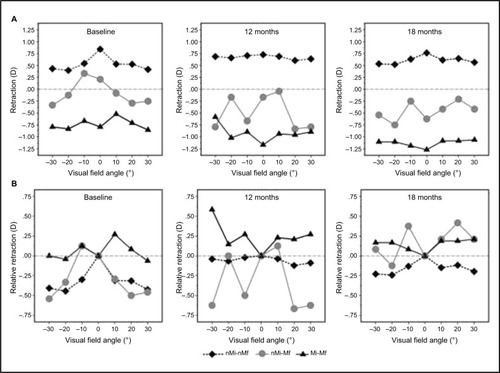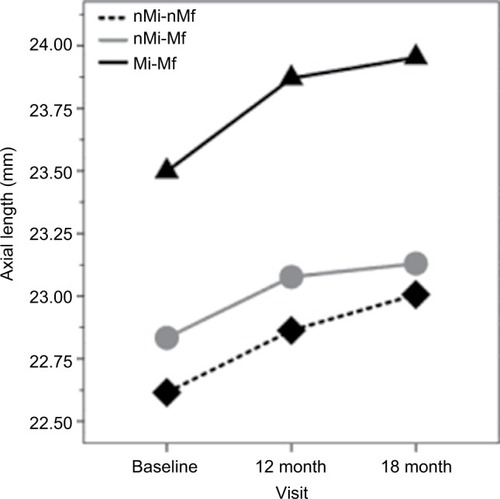Figures & data
Table 1 Central and peripheral refraction in all study visits and in each study group
Figure 1 Peripheral refraction (A) and relative peripheral refraction (B) for the children in the “nonmyopia, myopia” classification at baseline (left), at 12 months (middle), and at 18 months (right).
Abbreviations: RPR, relative peripheral refraction; nMi-nMf, non-myopic after 18 months; nMi-Mf, non-myopic at baseline and developed myopia after 18 months; Mi-Mf, myopic during the 18 months.

Table 2 Relative peripheral refraction in all study visits and in each study group

